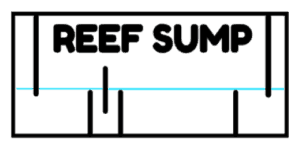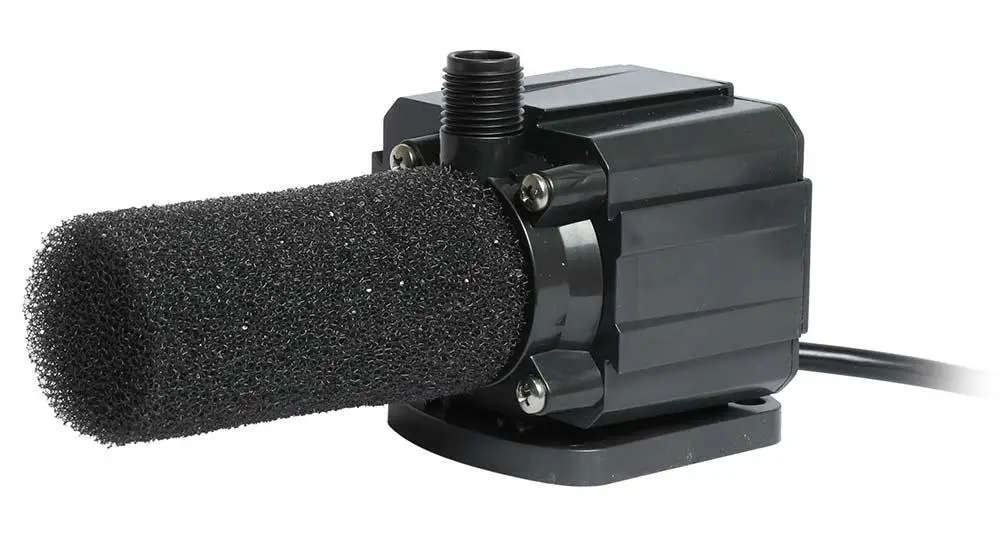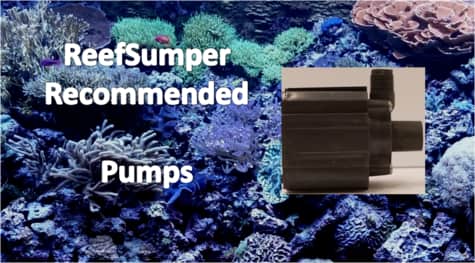
Why I plumbed to 3/4”
After much debating, I leaped in and decided to add a plumbed in frag tank to my main display tank. My main display tank is a 210-gallon mixed reef tank with a Trigger Systems Emerald 39 sump. I choose to go with a ZooMed 50 gallon Low Boy frag tank and plumb it directly into my display tank system. My 210-gallon reef tank is an Aqueon tank with dual 1” mega overflows and 3/4” dual return lines.
Click to read an overview of my 210 Gallon Reef Tank
This would prove to be a very challenging task that I would take on as a DIY project. To get the frag tank up and running some of the steps included re-plumbing the entire system, planning the runs, acquiring the right plumbing pieces, drilling the tank, and hoping that it is leak-free when starting it back up. All that while trying to not kill my fish and coral in the process. To start, one of the first decisions that I had to make was what return pump I wanted to run.
Before the frag tank addition, my tank was running off of two separate pumps one on each return line. I was using Mag Drive 7 pumps. These pumps are solid. The pumps move a good amount of water and are built very simple meaning that they last a long time and have only a few failure points. It is usually the impeller that breaks and they can be easily found online and replaced. With two long return lines, adding a third for the frag tank, and plumbing in a manifold I needed a much more powerful pump. I would ultimately decide on Echo Tech Marine’s Vectra L2 to push water where I needed it.
Vectra L2 Specs
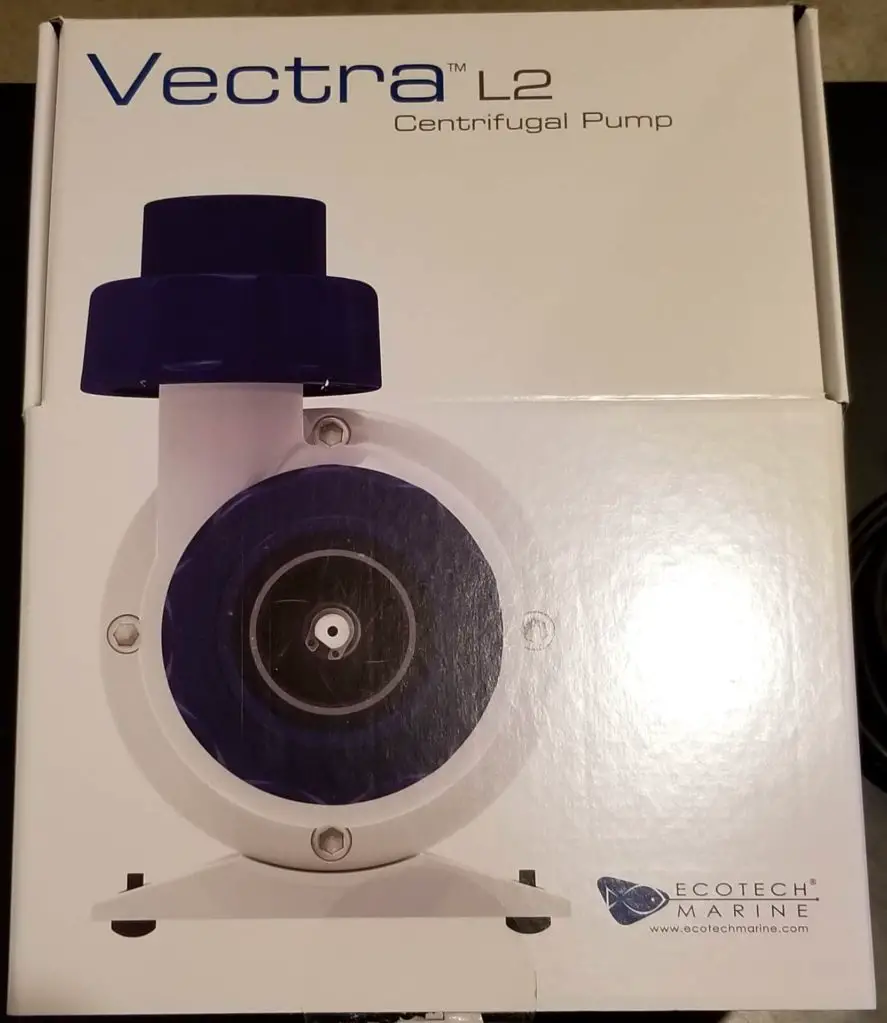
The Echo Tech Marine Vectra L2 is DC powered pump capable of pushing 3,100 gph in the reef aquarium. The DC part of this pump allows you to control the flow of the pump by adjusting a dial on the controller. This adjusts the power usage of the pump and can have cost savings if you don’t have to run the pump at full power all of the time. Another advantage of the DC pump is that they are generally very quiet pumps compared to AC pumps. The company Echo Tech Marine is known for quality innovative products in the reef-keeping hobby. The pump comes with a ton of great features you’d expect from Eco Tech Marine including app compatibility, battery backup options, different modes, and closed-loop options.
Table of specs
| Model | Vectra L2 |
| Flow | 3100 gph (11,500 lph) |
| Max Head Pressure | 21.5 ft (6.5 m) |
| Footprint | 8.5″ L x 5″ W |
| Input Dimensions | 1.5″ (38 mm) |
| Output Dimension | 1.25″ (31.75 mm) |
| Power | 150 watts |
An item of note: In considering this pump I did see a lot of reviews on the previous version of the Vectra, the L1 where a lot of customers were saying the pump failed after about a year. Many of the reviews mentioned what looked like the impeller housing melting. The Vectra L2 had mostly positive reviews from what I found and they market that it has been upgraded with a tougher motor sleeve, Improved thermal management, and improved couplers/collars.
Why I choose the Vectra L2
The Vectra L2 checked off many of the boxes I was looking for in a return pump. My three main considerations were the ability to get the job done, power considerations, and the quality/features of the pump.
Getting the Job Done
I wanted to make sure the pump I choose would get the job done. After planning out my system and figuring in head pressure, the length of my runs, and the number of bends, twists, and valves I ultimately thought that this pump would get the job done. I would be running three return lines, a BRS dual media reactor, and one additional manifold valve for potential future use. After everything was installed the pump performed beautifully and all while running only at about 75%.
Power Consideration
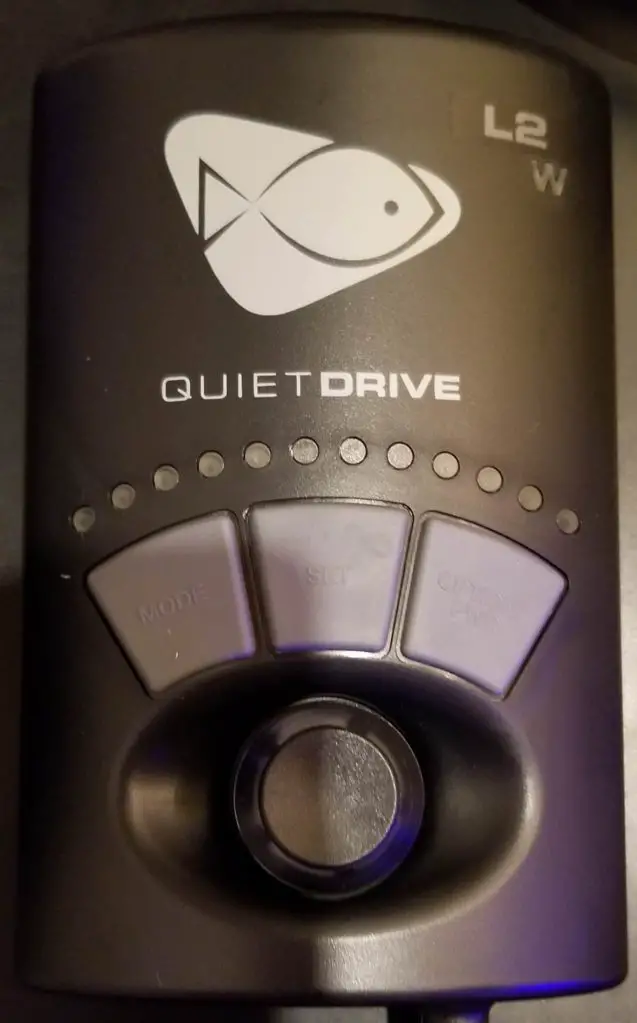
Another factor for me was power consideration. My tank was using so many plugs and its power consumption was impacting my energy bill at the end of the month. By switching to a single DC pump I would be able to remove both Mag Drive 7 pumps and a small pump that was driving the dual media reactor. The ability to control the flow of the pump on the fly was a big advantage for me as well. I also really wanted to try a DC-powered pump. Overall I was able to lower power consumption and another amazing advantage was how quiet the pump is. It is nearly silent especially when you have the other sounds of a tank going.
Echo Tech Marine Quality and Features
I’ve always had Radion XR15w Pro’s on my 210-gallon tank and they’ve been excellent lights with 0 issues in two years so far. Looking through the internet and YouTube the consensus is that Echo Tech Marine makes quality products that last. One of the biggest features that also helped sway the decision for me was the option to set up a battery backup. It seems that their backup system works well and can go a long time off of power compared to some other options out there.
EcoTech Radion Xr15 G6 Pro Led Aquarium Light
In the aquarium, enjoy richer colors, pop more fluorescence and create the ultimate balance between crisp and actinic. From its inception, Radion has set the standard for what full spectrum aquarium LED lighting can be.
Drawbacks
The biggest drawback of this pump was the cost. These pumps are not on the lower end or even the middle end of cost. For me, I was able to pick one up with some reward points I had plus a 20% discounted sale price. If it weren’t for those factors I might have looked elsewhere. Another potential drawback is having to have Echo Tech’s ReefLink system and app to fine-tune the pump and receive notifications. Everything works out of the box, but some features will need the app and ReefLink system.
How I plumbed the Vectra L2 into my system
The Vectra L2 uses a large 1.25” connection at the pump, and as mentioned earlier, my system uses 3/4” returns. First and foremost, if you can maintain a 1.25” drain throughout your entire system, it is the best option for maximum flow and performance out of your pump. Converting to a smaller pipe size will create back pressure on the pump and restrict flow.
For me it was not an option to keep or change to 1.25” and I had to run with the 3/4” lines. My tank was up and running and converting would be a major overhaul to the level of getting a new tank would be easier. I was very apprehensive about trying this and having too much back pressure on the pump. I think because of the distance of my runs, the vertical feet, and that it was feeding three return lines and a manifold, the pump worked fine in my setup.

For the connection at the pump, I used a piece of 1.25” PVC and primed and glued it to the collar of the Vectra. Next I connected a 1.25” to 3/4” PVC reducer to the 1.25” PVC pipe. With the reducer primed and glued together I could then transition to my system’s 3/4” return line size. I connected a piece of 3/4” PVC Pipe to the reducer and capped it off with a PVC hose barb.
I like to use soft silicone tubing between the pump and the main return lines. The soft tubing makes it easy to connect in various situations as it can be bent to fit several applications. Be careful not to bend it too much though, as it will kink and restrict flow. The use of soft silicone tubing will also help with any vibration sound coming from the return pump. It is hard to find this type of tubing locally and I had to buy a few feet from Bulk Reef Supply.
The other end of the silicone tubing is attached to the main return line on my system. From there the line runs up to the first main return line. I put a gate valve on this line in case I needed to put some extra backpressure into the manifold. I haven’t needed to close the gate valve yet, but it could prove useful in the future if the tank’s needs change. The next stop is the manifold. The manifold has three ball valves. One valve sends water to the frag tank, one to the media reactor, and the other is open for future use. After the manifold, the return lines run up to the second main tank return.
Overall I’ve been impressed with the Vectra L2 pump and it’s performed admirably thus far even with 3/4” tubing. I’m running it at about 75% and it provides higher flow and turnover than the individual pumps were doing on just the two lines.
The Complete Guide to Hard Plumbing in a Reef Aquarium
